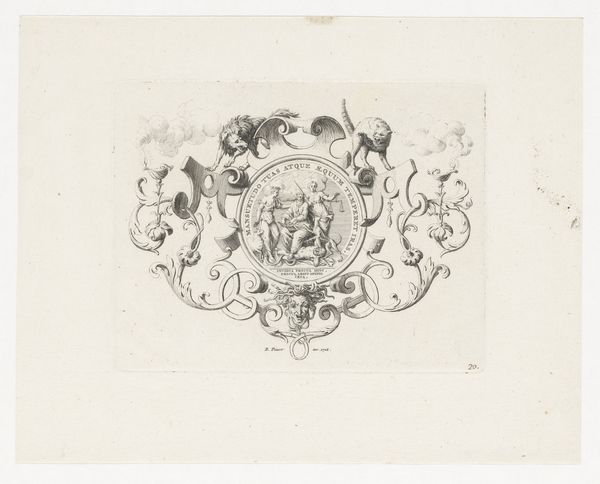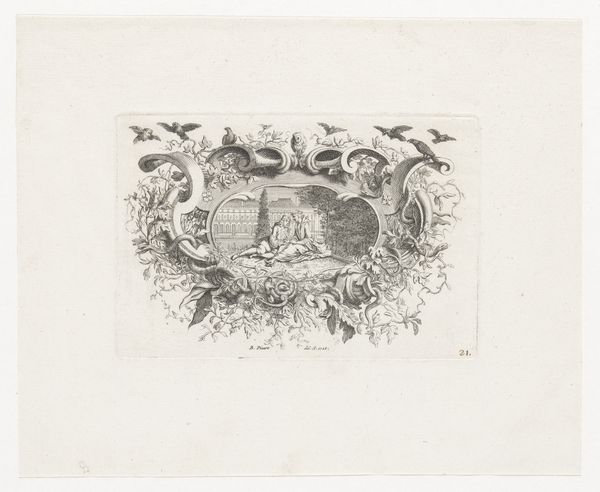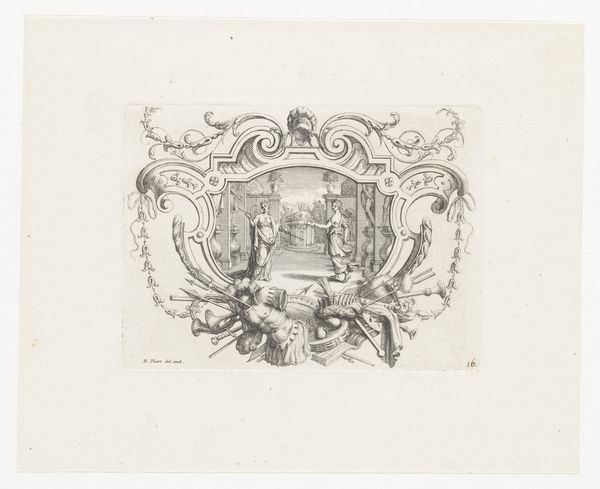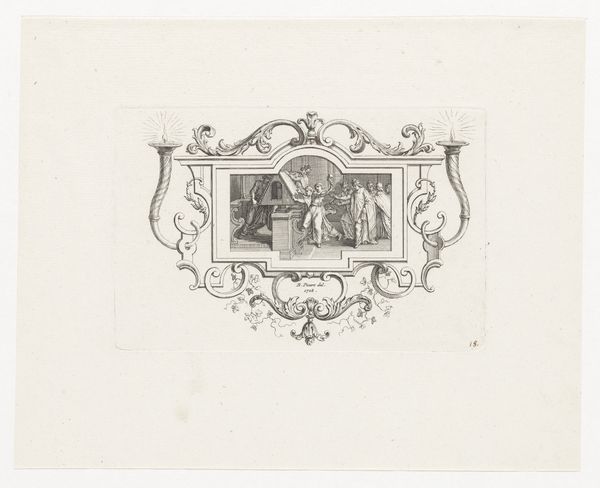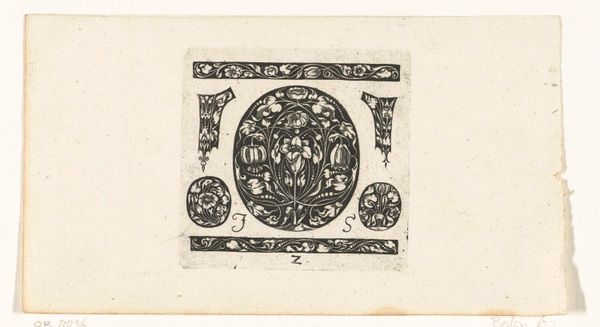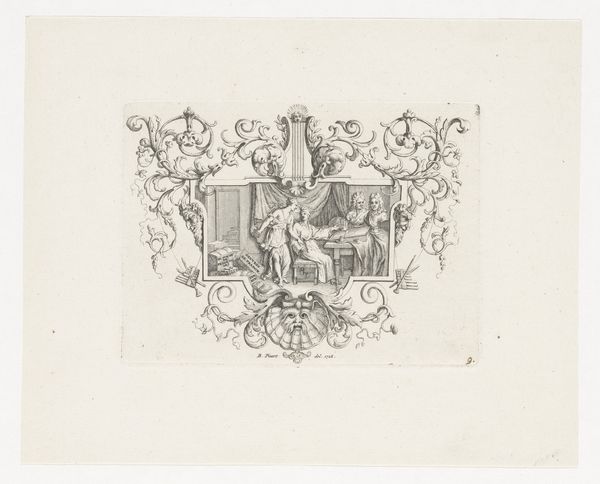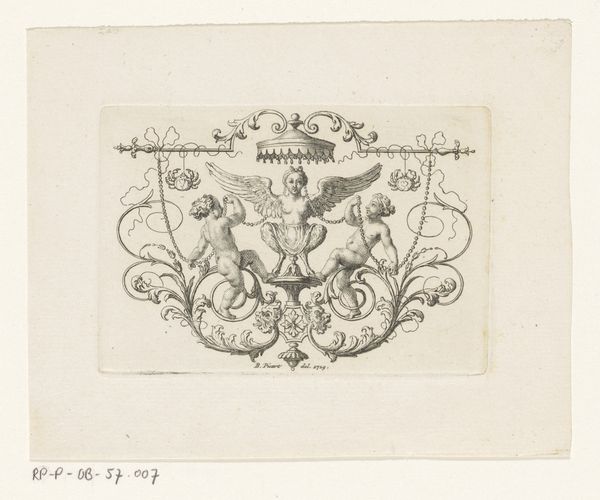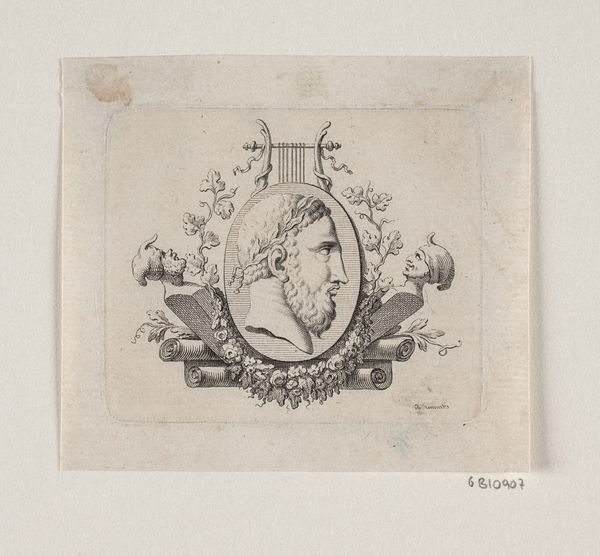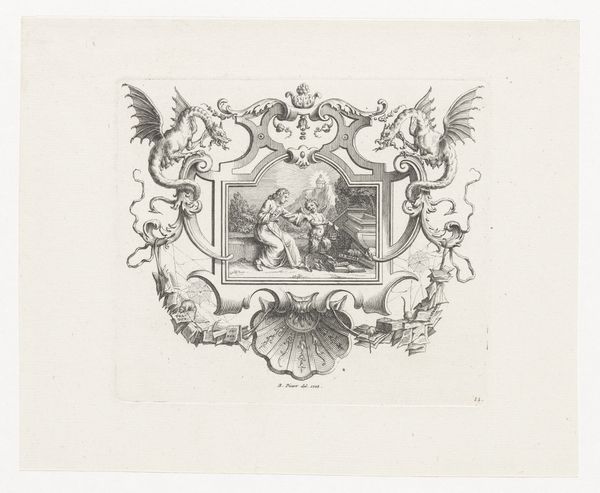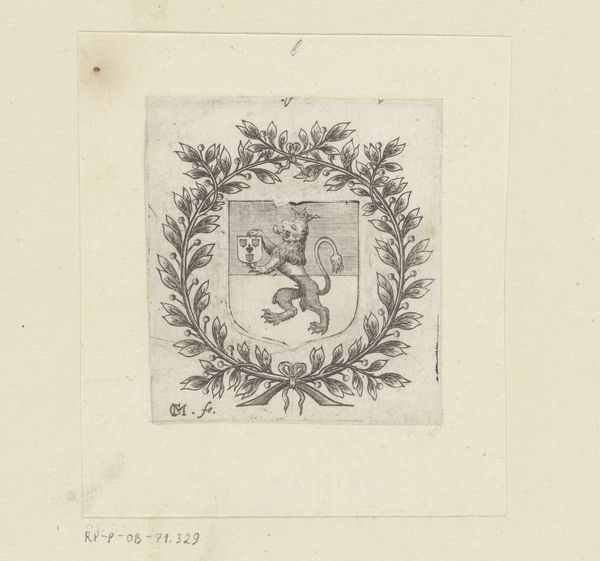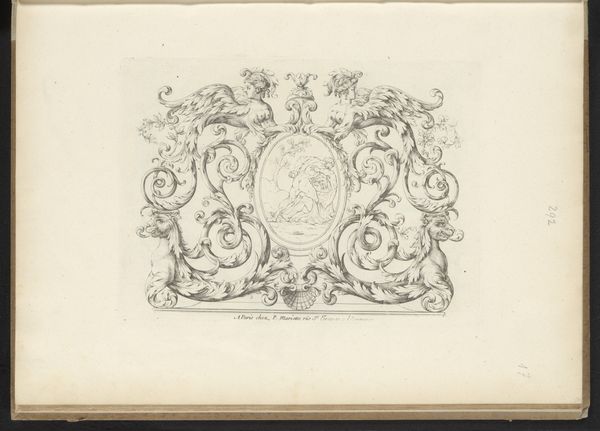
drawing, print, ink, engraving
#
drawing
#
baroque
#
pen drawing
# print
#
pen illustration
#
pen sketch
#
book
#
old engraving style
#
ink line art
#
personal sketchbook
#
ink
#
ink drawing experimentation
#
pen-ink sketch
#
line
#
pen work
#
sketchbook drawing
#
history-painting
#
engraving
Dimensions: height 108 mm, width 138 mm
Copyright: Rijks Museum: Open Domain
Curator: Here we have a print titled "Medaillon met de personificatie van Geschiedenis," created in 1728 by Bernard Picart. It’s currently held at the Rijksmuseum. Editor: My immediate impression is of delicate intricacy. The linear precision of the engraving lends itself to a visual experience that feels both detailed and airy, a baroque lightness almost. Curator: Absolutely. Consider the context: printmaking during this period facilitated the widespread distribution of ideas and images. Picart's skill speaks to the artisanal workshops of the time and the investment in producing these engravings for a burgeoning market. We can also notice that he worked using ink on this piece. Editor: Formally speaking, the composition strikes me as highly organized despite its ornamentation. The central medallion provides a clear focal point, framing the personification of History. The use of line to create volume and shadow is quite effective. Also, if you follow a top-down view, you will notice that the text encircling the main drawing acts like a "crown" for History. Curator: The "crown" can lead to the reading of it as an allegorical device of sorts, common in the Baroque period, in which History is presented as something to look up to. Note the detail, particularly how History is depicted recording events for posterity, it tells us much about the 18th-century’s view of itself, its aspirations and understanding of civilization as something worth transmitting. Editor: Indeed. It raises interesting questions about the relationship between text and image. What did it mean to visualize something as abstract as History? We also should focus on the medium of engraving here – How does its particular process impact the final image, its circulation, and ultimately, its meaning? Curator: Thinking about the materials, ink and paper became vessels, literally carriers, of historical narratives. The production of these prints was a carefully crafted manufacturing endeavor. It involved workshops of artisans and facilitated the spread of ideas beyond elite circles. Editor: Precisely! These close considerations about History and how Picart conceived the art making, are quite stimulating. Thanks! Curator: Yes! The whole analysis became an investigation on craftmanship. Thank you.
Comments
No comments
Be the first to comment and join the conversation on the ultimate creative platform.
